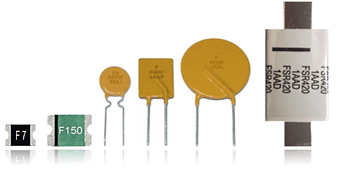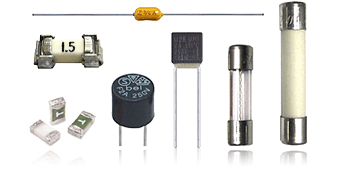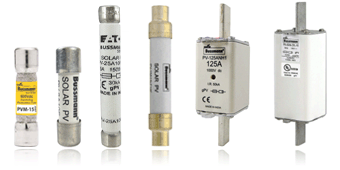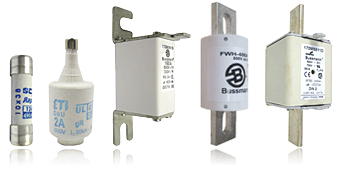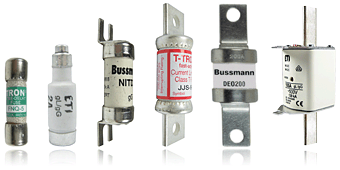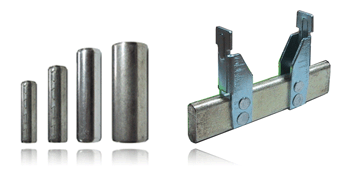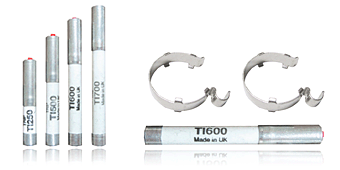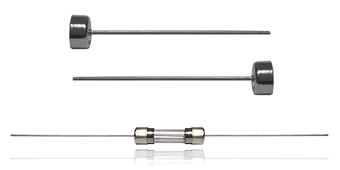Fuses
Buy your fuses online with Swe-Check. We stock a huge variety of fuses that can be used to protect your electrical circuits.
We sell electronic fuses, blade fuses (ATC/ATO), car fuses, ultra rapid fuses, semiconductor fuses, solar fuses, medium voltage fuses, surge protection devices, pv fuses and more.
With thousands of fuses in stock, whether you need low voltage AC fuse, or a high voltage HRC fuse we are confident you'll find what you need!
We sell electronic fuses, blade fuses (ATC/ATO), car fuses, ultra rapid fuses, semiconductor fuses, solar fuses, medium voltage fuses, surge protection devices, pv fuses and more.
With thousands of fuses in stock, whether you need low voltage AC fuse, or a high voltage HRC fuse we are confident you'll find what you need!
Electric Vehicle (EV) Fuses and Hybrid Electric Vehicle (HEV) Fuses
Fuses designed for use in electric vehicles and chargers.
Semiconductor Fuses & Very Fast Acting Fuses (Ultra Rapid Fuses)
Fuses designed to protect sensitive semiconductor components.
Medium Voltage Fuses
Fuses designed to protect medium to high voltage equipment rated 1000V or more.
Neutral Fuse Links
These links can be used in place of a fuse for a circuit that no longer requires fuse protection.
Fuse Pullers
These tools can be used to remove a variety of fuses from a fuse holder. Some can also be used to insert the fuse into the holder.
Fuse Trigger Indicators
These indicators can be mounted to specialised fuses. When the fuse blows the indicator pin will pop-out to trigger a microswitch.
Fuse Microswitches
These microswitches can be mounted directly onto specialised fuses. When the fuse blows, the microswitch will be triggered.
Pigtail Fuse Caps
These caps can be fitted onto a variety of cartridge fuses. This allows the fuse to be soldered to a printed circuit board.
Fuse Extension Caps for Medium Voltage Fuses
These extension caps allow you to use the new shorter DIN medium voltage fuses in the older holders which were designed for longer fuses.
What do fuses do?
The purpose of fuses, broadly speaking, is to protect the electrical circuits and cables in your equipment from damage when excessive electrical current (called overloading or overcurrent) is present in the circuit. Fuses are designed as an effective safety device protecting against an overflow of electrical current.
How do fuses work?
If too much current flows through a device, the fuse is designed to blow which effectively stops the flow of electricity through the circuit. Imagine the fuse as a bridge, and so once the fuse blows, the bridge no longer exists, thereby stopping the flow of electricity in the circuit thereby protecting wiring and components in the circuit.
What are the types of fuses?
There are many different types of fuses, all of which are designed to protect cable or equipment operating in either AC voltage or DC voltage circuits.
AC fuses are designed to protect circuits using alternating current and are often classified as either a high voltage fuse (HV) or low voltage fuse (LV).
LV Fuses: Low voltage fuses commonly include varieties such as cartridge, blade, bolted, bottle and knife blade fuses. Many of these fuses feature an indicator or striker to alert a blown fuse.
HV Fuses: Typically, HV fuses are used to protect transformers, and are designed for operating in voltages of 1500V and higher. High voltage fuses often feature a ferrule or cartridge style body such as a Cartridge type HV HRC Fuse. Some fuses are designed to operate in air whilst others in an oil filled environment such as a Liquid type HV HRC Fuse
How do you replace a blown fuse?
Once a fuse has blown, it must be replaced. Fortunately, fuses are much easier, and cheaper to replace compared with other components in the circuit or the device itself. If there was no fuse present in your device, a surge in current could damage components and/or wiring in your device. In addition, there could be a chance of personal injury or fire.
Learn how to identify your blown fuse.
Do you stock car fuses?
Yes, we stock a wide range of automotive fuses.
View our full Automotive Fuse Range
Shop our range of fuses online.
Our fuses are competitively priced and it is easy to order online with Swe-Check. We offer a huge range of fuses. Please view our range of fuses to find the fuse you're looking for.
If you aren't sure what fuse you'll need or unable to find the fuse you are searching for, please contact our friendly staff for assistance.
The purpose of fuses, broadly speaking, is to protect the electrical circuits and cables in your equipment from damage when excessive electrical current (called overloading or overcurrent) is present in the circuit. Fuses are designed as an effective safety device protecting against an overflow of electrical current.
How do fuses work?
If too much current flows through a device, the fuse is designed to blow which effectively stops the flow of electricity through the circuit. Imagine the fuse as a bridge, and so once the fuse blows, the bridge no longer exists, thereby stopping the flow of electricity in the circuit thereby protecting wiring and components in the circuit.
What are the types of fuses?
There are many different types of fuses, all of which are designed to protect cable or equipment operating in either AC voltage or DC voltage circuits.
AC fuses are designed to protect circuits using alternating current and are often classified as either a high voltage fuse (HV) or low voltage fuse (LV).
LV Fuses: Low voltage fuses commonly include varieties such as cartridge, blade, bolted, bottle and knife blade fuses. Many of these fuses feature an indicator or striker to alert a blown fuse.
HV Fuses: Typically, HV fuses are used to protect transformers, and are designed for operating in voltages of 1500V and higher. High voltage fuses often feature a ferrule or cartridge style body such as a Cartridge type HV HRC Fuse. Some fuses are designed to operate in air whilst others in an oil filled environment such as a Liquid type HV HRC Fuse
How do you replace a blown fuse?
Once a fuse has blown, it must be replaced. Fortunately, fuses are much easier, and cheaper to replace compared with other components in the circuit or the device itself. If there was no fuse present in your device, a surge in current could damage components and/or wiring in your device. In addition, there could be a chance of personal injury or fire.
Learn how to identify your blown fuse.
Do you stock car fuses?
Yes, we stock a wide range of automotive fuses.
View our full Automotive Fuse Range
Shop our range of fuses online.
Our fuses are competitively priced and it is easy to order online with Swe-Check. We offer a huge range of fuses. Please view our range of fuses to find the fuse you're looking for.
If you aren't sure what fuse you'll need or unable to find the fuse you are searching for, please contact our friendly staff for assistance.





